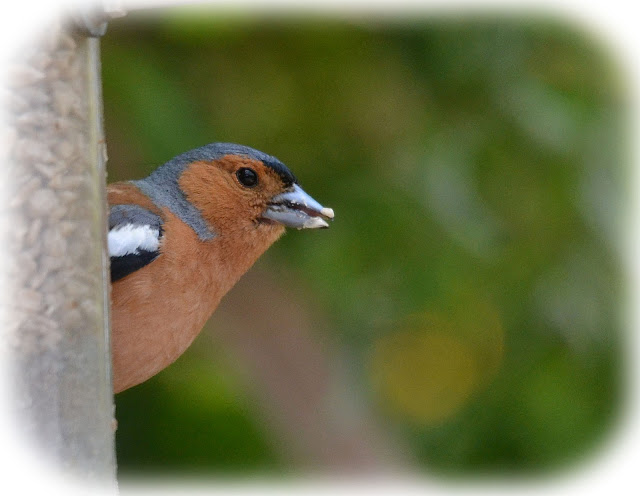Its that time of year again, when the garden around the pear tree is alive with juvenile birds.
So here's a look at what's happening around the garden for this month.
The Blackbird family has managed to raise three healthy youngsters despite the continual attentions of the local Magpies, which also attempted to nest close by, too close for the Blackbirds liking, the male Blackbirds alarm call has been manic at times, but I must admit to a soft spot for this pair, the male has been courageous in his efforts to protect his territory, most occasions, a ferocious dive at high speed has been sufficient from the male to drive them away, on one occasion I witnessed the Magpie investigating a conifer tree in my neighbor's garden, being preoccupied he didn't notice the Male Blackbird launch his attack, amazingly it appeared to crash into the Magpies back, pulling it out of the tree and down to the ground, there followed some indignant squawking, the Magpie left the scene at speed, the male Blackbird returned to his lookout high in the pear tree.
Most days the Blackbirds can be found skulking around the borders, running around the lawn under the feeders and grabbing tit-bits that fall, just lately the male Blackbird has taken to hovering, albeit for a short moment in front of the feeder,grabbing a bite from the fat balls in the feeder.
 |
| Male Blackbird |
The female has developed a slightly different technique.
 |
| Female Blackbird |
The Juvenile Starlings are so intent on begging for food that they sometimes get confused, I witnessed a Starling making the mistake of trying to steal a meal from the Blackbird, once again aggressively chased away.
The garden is looking more like a creche for juvenile birds at the moment, as well as the Blackbirds the raucous cries from the Starlings begging for food seem constant throughout the day.
Love them or hate them Starlings are always there in the garden, and very watchable, the sexes appear to look very similar, I did read somewhere that in the breeding season their is a slight variation in the colours at the base of the beak, blue for males, pink for females, sounds familiar,
The photograph below demonstrates this quite well, the two Starlings at the top of the feeder have a blue base to their beak, and should be males. The Starling at the bottom has a pink base to her beak and should be the female.
 |
| Male & female Starlings |
Starlings have nested in my neighbours eaves again this year, heres a few photographs of the Starling Family, before they left the safety of their nest site.
These have now left the nest and joined the throng of other juveniles screaming for food from every available vantage point.
And a final look at a mature Starling with the sun bringing out the iridescent colours within the feathers.
The Robin pair have already raised one brood this year, I noticed the male Robin has been feeding the female again, part of the bond strengthening process, maybe getting ready for a second brood.
 |
| Robin pair |
House sparrows have suddenly reappeared in the garden after a short absence, bringing with them their young families, the adults flying from the trees with a train of juveniles following behind. They then sit around the feeders fluttering there wings and demanding food. Most of the feeding appeared to be by the female sparrows , although I have seen a male sparrow feeding on one occasion.
Heres a selection of House Sparrow photographs taken over the last few days.
 |
| House sparrow family |
Other birds visiting the garden have included this fine Great Spotted Woodpecker that appeared on the garden feeder after a long absence.
 |
| Great Spotted woodpecker |
Ring necked Parakeets are still visiting the pear tree, usually early morning and early evening.
 |
| Ring-Necked parakeet |
Greenfinches are becoming more regular now that they have discovered the sunflower heart source.
Goldfinches are here every day and becoming more tolerant of human presence around the garden.
 |
| Goldfinch |
Chaffinches have become scarcer as we move away from the winter months, an occasional male has been seen on the feeders.
 |
| Chaffinch |
Blue Tits are regular visitors, I have only noticed one juvenile , and only because of the wing fluttering and demand for food.
 |
| Blue tit |
Great Tits are also regular visitors but they do not seem to linger ,
a quick snatch from the feeder and they fly off.
 |
| Magpie |
One of the Magpies before it was seen off by the Blackbird.
and finally, no further visits from the Heron













No comments:
Post a Comment